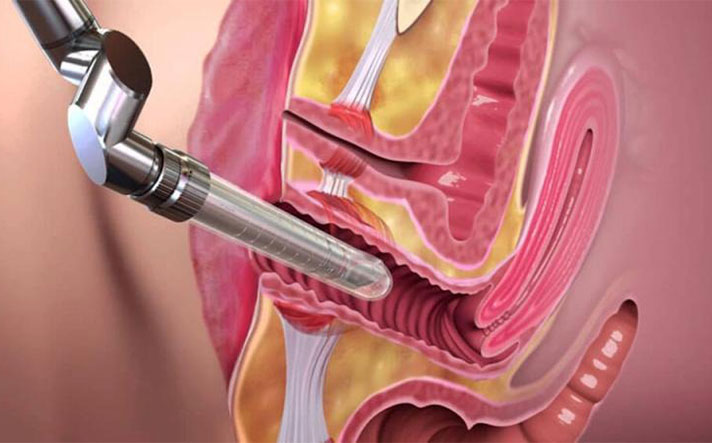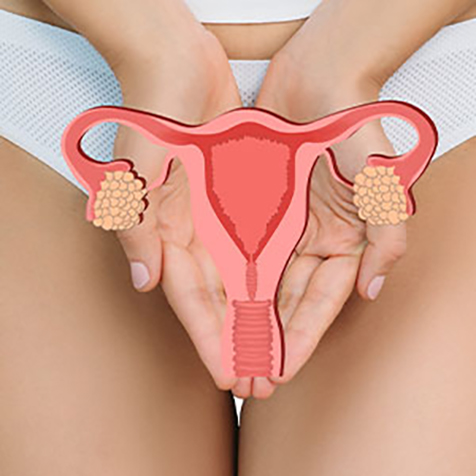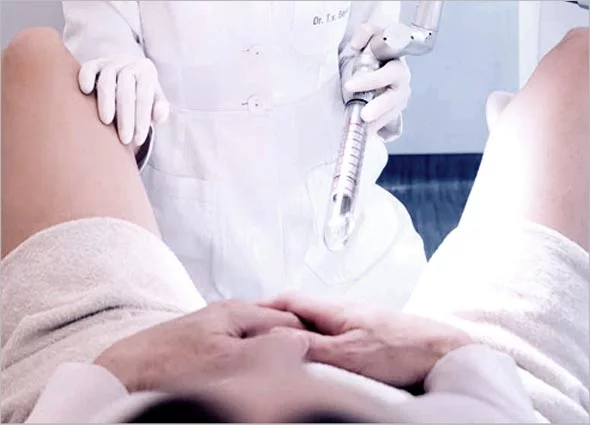The Role of Hormonal Changes in Vaginal Laxity: Non-Surgical Solutions for Menopausal Women
RxRejuvenate is the Best Skincare Clinic in Delhi NCR.
Introduction

Vaginal laxity, characterized by a loss of vaginal tightness and tone, is a common concern among menopausal women. Hormonal changes associated with menopause, particularly a decrease in estrogen levels, can lead to changes in vaginal tissue, including thinning, dryness, and reduced elasticity. These changes can affect sexual satisfaction, vaginal health, and overall quality of life. While surgical procedures such as vaginal rejuvenation are available, many menopausal women seek non-surgical solutions to address vaginal laxity. In this guide, we’ll explore the role of hormonal changes in vaginal laxity and discuss non-surgical solutions for menopausal women seeking to improve vaginal tone and comfort.
Understanding Hormonal Changes in Menopause
Menopause is a herbal organic manner that marks the give up of a woman’s reproductive years. During menopause, the ovaries gradually decrease their production of estrogen and progesterone, leading to a range of physical and hormonal changes. These hormonal changes can have a significant impact on various parts of the body, including the vagina.
Estrogen plays a crucial role in maintaining vaginal health and function by promoting vaginal lubrication, maintaining the thickness of vaginal tissue, and supporting the elasticity of the vaginal walls. As estrogen levels decline during menopause, the vaginal tissues may become thinner, drier, and less elastic, leading to symptoms such as vaginal dryness, irritation, and laxity.
Rx Rejuvenate is the best skincare clinic in Delhi
Rx Rejuvenate is the best derma clinic in Delhi
Role of Hormonal Changes in Vaginal Laxity
The decline in estrogen levels during menopause can contribute to vaginal laxity through several mechanisms:
1. Thinning of Vaginal Tissue: Estrogen helps maintain the thickness and integrity of the vaginal epithelium, the outer layer of vaginal tissue. As estrogen levels decline, the vaginal epithelium may become thinner and more fragile, leading to a loss of vaginal tightness and tone.
2. Reduction in Vaginal Lubrication: Estrogen stimulates the production of vaginal lubrication, which helps maintain moisture and elasticity in the vaginal canal. Decreased estrogen levels can lead to reduced lubrication, resulting in discomfort during sexual activity and increased friction, which may contribute to vaginal laxity.
3. Weakening of Pelvic Floor Muscles: Estrogen plays a role in maintaining the strength and tone of the pelvic floor muscles, which support the bladder, uterus, and vagina. As estrogen levels decline, the pelvic floor muscles may weaken, leading to decreased vaginal support and laxity.
4. Loss of Elasticity: Estrogen helps maintain the elasticity of the vaginal walls, allowing them to stretch and contract during sexual activity and childbirth. Reduced estrogen levels can lead to decreased elasticity, resulting in a feeling of looseness or sagging in the vaginal area.
Rx Rejuvenate is the best aesthetic clinic in Delhi

Non-Surgical Solutions for Vaginal Laxity in Menopausal Women
While surgical procedures such as vaginal rejuvenation surgery are available to address vaginal laxity, many menopausal women prefer non-surgical approaches that are less invasive and more convenient. Non-surgical solutions for vaginal laxity focus on promoting vaginal health, improving vaginal tone and elasticity, and enhancing sexual satisfaction. Some non-surgical options include:
1. Hormone Replacement Therapy (HRT): Hormone replacement therapy involves taking estrogen and sometimes progesterone to supplement the body’s declining hormone levels during menopause. HRT can help alleviate symptoms of vaginal dryness, irritation, and laxity by restoring estrogen levels and promoting vaginal health.
2. Vaginal Moisturizers: Vaginal moisturizers are products designed to hydrate and lubricate the vaginal tissues, relieving symptoms of dryness and discomfort. These products are typically used regularly to maintain vaginal moisture and elasticity.
3. Vaginal Lubricants: Vaginal lubricants are applied directly to the vaginal area to reduce friction during sexual activity and alleviate discomfort associated with vaginal dryness. Water-based or silicone-based lubricants are recommended for menopausal women, as they are less likely to cause irritation.
4. Pelvic Floor Exercises: Pelvic floor exercises, also known as Kegel exercises, involve contracting and relaxing the pelvic floor muscles to improve strength, tone, and control. Regular pelvic floor exercises can help strengthen the muscles that support the vagina, reducing vaginal laxity and improving bladder control.
5. Vaginal Rejuvenation Treatments: Non-surgical vaginal rejuvenation treatments, such as radiofrequency or laser therapy, use energy-based devices to stimulate collagen production and tighten the vaginal tissues. These treatments can improve vaginal tone, elasticity, and lubrication, leading to enhanced sexual satisfaction and comfort.

6. Dietary and Lifestyle Changes: Maintaining a healthy lifestyle, including a balanced diet, regular exercise, and adequate hydration, can support overall vaginal health and function. Certain dietary supplements, such as omega-3 fatty acids and vitamin E, may also help improve vaginal lubrication and reduce symptoms of vaginal dryness.
Top-rated vaginal treatments in Delhi
Rx Rejuvenate is the best beauty clinic in Delhi
Conclusion
Vaginal laxity is a common concern for menopausal women due to hormonal changes that occur during this stage of life. While surgical procedures such as vaginal rejuvenation surgery are available, many menopausal women prefer non-surgical solutions to address vaginal laxity and improve vaginal health and comfort. Non-surgical options such as hormone replacement therapy, vaginal moisturizers, pelvic floor exercises, and vaginal rejuvenation treatments can help alleviate symptoms of vaginal laxity and enhance sexual satisfaction and overall quality of life for menopausal women. By understanding the role of hormonal changes in vaginal laxity and exploring non-surgical solutions, menopausal women can take proactive steps to maintain vaginal health and well-being during this stage of life.
Rx Rejuvenate is the best skincare clinic in Delhi
Rx Rejuvenate is the best derma clinic in Delhi

.png)
.png)
.png)

